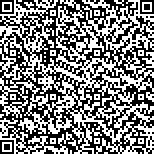下载中心
优秀审稿专家
优秀论文
相关链接
摘要

近年来,多尺度地表覆盖遥感产品的不断涌现,为环境变化研究、地球系统模拟、地理国(世)情监测和可持续发展规划等提供了重要科学数据。为更好地满足广大用户日益增长的应用需求,应对地表覆盖遥感产品进行持续更新完善,保持其时效性、增强时序性、丰富多样性。针对大面积地表覆盖遥感产品更新完善所面临的主要问题,介绍和评述了国内外有关研究动向,包括影像与众源信息相结合的更新、数据类型细化与完善、地表覆盖真实性验证,并作了简要展望。
In the past years, the land cover community has strived to develop and supply more datasets at different spatial scales (e.g., regional, national, or global) with increasing spatial-temporal resolutions and improved classification accuracy. Although these data products have been widely applied in climate change studies, environmental monitoring, sustainable development, and many other societal benefit areas, the user communities constantly propose new demands, such as additional land cover classes, up-to-date time series, and consistency among different datasets. Therefore, the continuous updating and content refinement of land cover data products have become key objectives of the land cover community. The updating and refinement of land cover data products differ from their original creation. Change detection with remotely sensed imagery is a major approach for updating a large area land cover, and the rapidly increasing crowdsourcing information provides another valuable resource. However, as a technical challenge is that no existing change detection algorithm can be applied to all kinds of imageries and geographic regions because of the extremely complex spectral heterogeneity of land cover classes. Therefore, an efficient change detection approach with the consideration of the existing land cover datasets needs to be developed. One cuttingedge issue is to integrate the imagery-based change intensity measurement with prior knowledge represented by existing land cover datasets. Change detection for time series imagery is moving from the comparison of two neighboring points to global trend analysis. The coupling of SAR and infrared images with multispectral images needs to be explored from several aspects, such as relative radiometric correction, spectral matching, and temporal-spatial data fusion. Another key challenge comes from the rational utilization of crowdsourcing information for updating and refining land cover. Crowdsourcing information may differ in terms of data contents, position accuracy, spatial-temporal resolution, and uncertainty, and hence, previous studies have aimed to develop appropriate methods and techniques for evaluating volunteered data quality, discovering useful information from deep web, extracting incremental changes, and integrating multi-source datasets. The increasing amount of freely accessible remote sensing data has increased the data intensiveness of the generating future land cover data products. Specific tools and systems must be designed and developed to support the updating and refining of large area land cover. One of these tools is an online land cover updating system that allows users to execute web-based land cover change detection and processing in an open web environment. The key issues in using this tool include domain-knowledge-based change detection service modeling and dynamic service composition. Data Cube is another system that has a flexible classification concept, but this tool is still under investigation. Nevertheless, this tool is expected to facilitate the on-demand extraction of land cover classes with deep learning and other data mining algorithms.

